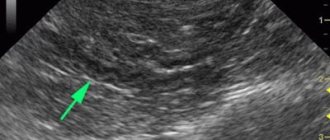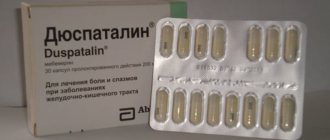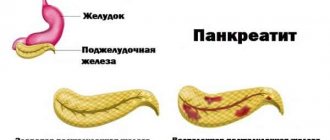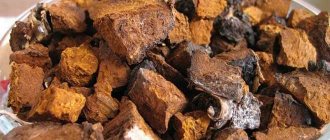Indications and contraindications
Acute pancreatitis can threaten the patient's life, so the patient requires medical attention.
The doctor will identify the cause of the pain and prescribe the necessary medication to quickly relieve the symptoms. Before the examination, if necessary, a patient with pancreatitis is allowed to self-inject a proven antispasmodic, but the use of an anesthetic that can blur the clinical picture is excluded.
In addition, with pancreatitis, administering the drug without consulting a doctor often leads to side effects, including:
- decreased blood pressure;
- allergy;
- heart rhythm disturbance:
- profuse sweating;
- eosinophilia in the blood count.
Analgesics
Despite their effectiveness and immediate relief of symptoms, narcotic analgesics are used in extreme cases and only in a hospital setting, as they cause unwanted complications and side effects (withdrawal syndrome and addiction).
The mechanism of action of analgesics is the inhibition of pain receptors and the release of enkephalins and endorphins.
The group of narcotic analgesics includes the following:
- Promedol and Fentanyl have a strong analgesic effect and are used for acute pancreatitis.
- Tramadol is considered a non-narcotic opioid analgesic. However, the drug belongs to the list of potent substances of the Standing Committee for Drug Control of the Ministry of Health and is available only with a doctor’s prescription with two seals. Tramadol has a mixed mechanism of action, affects the spinal cord and instantly relieves symptoms.
Non-narcotic analgesics for injection
The following drugs belong to this group:
- Baralgin is one of the most effective analgesics. In a matter of minutes, it relieves the patient from spasms of muscle fibers, inflammatory processes and elevated body temperature.
- Maxigan - has a similar effect on the patient’s body.
- Mivalgan is similar in characteristics to previous drugs, but is prohibited for use by patients with agranulocytosis.
- Nospaz is an antispasmodic and analgesic. The drug cannot be prescribed to patients with bronchial asthma and a tendency to allergic reactions.
- Sandostatin - inhibits the degree of pancreatic secretion and prevents the secretion of pancreatic juice. Often an injection with this drug is used after surgery.
- Contrical is available in the form of a lyophilisate for solution and is used to prevent pancreatic necrosis in acute pancreatitis.
Treatment of pancreatitis with medications - 5 main types of medications and treatment regimens
Pancreatitis is a serious disease associated with inflammation of the pancreas and, in the absence of proper attention to the problem, leading to complications. Treatment of pancreatitis with medications is the first step; as a rule, treatment of the disease begins with it. There are many drugs that effectively relieve the disease.
How to properly treat pancreatitis?
Inflammation of the pancreas occurs when enzymes that break it down are activated in the gland. Pancreatitis develops in different forms, there are two of them: acute and chronic. Its treatment depends on the degree of the disease.
When pathology is first detected, analgesic drugs and antienzymes are prescribed, and drugs for chronic pancreatitis (sluggish) include drugs to stimulate secretion, antispasmodics and a group of other drugs.
Three main rules: provide the patient with rest, a gentle diet and cold to relieve swelling.
Based on the symptoms, medications for pancreatitis are prescribed to relieve associated symptoms. It is important to pay attention (in order to eliminate) to the provocateurs of the pathology with which the course of the disease begins, especially if it is:
- diabetes;
- stomach ulcer;
- gallstones;
- drug poisoning;
- respiratory tract diseases.
Treatment of chronic pancreatitis with medications
If pancreatitis is diagnosed, a provoking disease is found and treatment for it is carried out, but without success, the pathology can be considered chronic. Inflammation has occurred in the tissue, and complex therapy aimed at relieving symptoms is necessary. What medications should I take for chronic pancreatitis? The treatment regimen is as follows:
- for severe pain, use antispasmodics;
- in case of exacerbation, antibiotics may be prescribed;
- to reduce stomach acidity, drink antacids;
- Inhibitors and H2 blockers are designed to regulate secretory function;
- enzymatic preparations are prescribed based on the body’s need for lipase;
- in rare cases, antienzyme agents are taken intravenously.
Treatment of acute pancreatitis with medications
Acute pancreatitis is more difficult to diagnose; difficulties arise when the symptoms are similar to other pathologies. The patient feels discomfort in the area of the heart, shoulder blades, shoulder, hypochondrium.
Discomfort spreads to the left side of the body, acute pain occurs. After a heavy meal, there is heaviness in the stomach, nausea, and diarrhea. The condition worsens, and hospital treatment and pancreatic surgery are possible.
The doctor prescribes medications that alleviate the patient’s condition for acute pancreatitis:
- agents that normalize liver function;
- painkillers;
- medications that inhibit the production of secretions by the gland;
- drugs to relieve swelling;
- medications to prevent dehydration.
What drugs are used to treat pancreatitis?
Successful treatment of pancreatic pathology is a long process. To restore the normal functioning of the gland and its production of pancreatic juice, various methods are used.
The main one is taking medications. Medicines play a major role in restoring the functioning of the gland.
Under the close supervision of a gastroenterologist, inflammation of the pancreas is blocked; treatment and medications are prescribed by a specialist.
Painkillers for pancreatitis
One of the most unpleasant symptoms of the disease is pain. The discomfort can be so unbearable that the patient has difficulty breathing and speaking. The pain is severe, radiating to the back, lower back and other parts of the body, indicating which part of the organ is affected.
Then doctors prescribe medications for exacerbation of pancreatitis: strong analgesics, non-steroidal drugs, narcotic analgesics taken intravenously. Pancreatitis is treated with painkillers from several groups.
- H2-blockers of histamine receptors. By reducing the production of pancreatic enzymes, drugs that regulate secretory function are used, such as Famotidine, Ranitidine.
- If it is necessary to relieve spasms and facilitate enzymatic elimination, antispasmodic drugs are prescribed. For severe pain, Papaverine, Atropine, Aprofen, No-Shpa are used.
- Nonsteroidal medications taken for inflammation and pain - Paracetamol, Ibuprofen, Aspirin, Nimesil. They relieve pain and fever.
- Analgesics. For example, Baralgin, Analgin.
- Buprenorphine and Tramadol are powerful drugs that are administered intramuscularly.
Anti-inflammatory drugs for pancreatitis
During illness, the affected pancreas is digested by its own enzymes, and the body experiences intoxication.
Anti-inflammatory drugs should increase the pain threshold, dilate the blood vessels adjacent to the site of inflammation, and enhance the body's natural fight against inflammation.
This group of drugs prevents the formation of blood clots and has an antiallergic effect. Treatment of acute pancreatitis with medications at home is possible, but it is better to entrust your health to professionals.
Known drug regimens:
- 2 cubes of Analgin and 3 ml of Baralgin, intramuscularly. The course is adjusted by a doctor and lasts about a week.
- Phenicaberan (2 ml / 0.25% solution), Atropine (1 cube of 1% solution) and Papaverine (4 / 2%).
- Intramuscular administration of No-shpa and Platyfillin (1 ml morning and evening). Additional administration of Prostenon is possible.
- When the disease worsens, antibiotics may be prescribed: Cefuroxime, Ampiox, Levomycetin and others.
Antienzyme drugs for pancreatitis
After the pain attack has been relieved and the acute period has ended, treatment of pancreatitis with medications involves taking medications containing amylase, lipase and trypsin.
Enzyme preparations for pancreatitis: Creon, Pancitrate, Panzinorm, Mezim, fat-soluble vitamins and other medications. In some cases (and when the syndrome is primary), antienzyme agents are prescribed intravenously.
They block the activity of some enzyme agents, but have many negative side effects. The drugs include:
- Contrikal;
- Gordoks;
- Aprotinin;
- Ingitril.
Antacids for pancreatitis
In addition to enzyme agents, antacid drugs are prescribed for the treatment of pancreatitis, increasing the effectiveness of their action.
To reduce gastric acidity, alkaline mixtures are used, for example, Almagel, Phosphalugel and the like.
These medications eliminate exocrine insufficiency, which leads to disruption of the proper functioning of the duodenum, and reduce the acidity level of pancreatic juice in the stomach.
Choleretic drugs for pancreatitis
To achieve such effects as reducing the secretory load on the pancreas, eliminating edema and stagnation of bile, and improving digestion, they resort to the use of choleretic agents.
When pancreatitis is treated with medications, the drugs are prescribed by a doctor, and with his permission, the therapy can be supplemented with herbs containing components such as vitamin C, essential oils, grape sugar, resins, menthol, flavones, flavonoids, tannins, etc. The most commonly used tablets for pancreatitis are drugs such as:
- Essentiale;
- Holenzyme;
- Chophytol;
- Allohol;
- Libiol;
- Ursosan;
- Odeston;
- Nikodin.
Scheme for treating pancreatitis with medications - drugs
In modern medicine, a number of methods and techniques are used to eliminate attacks of pancreatitis. Pharmacological agents play the main role in them. But it is important to consider that pancreatitis is an urgent condition, the treatment of which is carried out in a hospital.
Patients are often hospitalized, IVs are placed to support the functioning of various organs and systems, and medications are prescribed to relieve symptoms of the disease.
Intensive care measures are complemented by drugs for pancreatitis, which prevent damage to pancreatic tissue and kill existing infection.
Treatment of acute pancreatitis at home - drugs
Treatment of inflammation of the pancreas with medications is possible at home, but provided that the patient maintains contact with the doctor, and the worst is over. This is especially true for the uncomplicated form of the disease. It is important to ensure complete rest and follow a diet. Pain syndrome is relieved with analgesics and antibiotics. If this is not the first attack, the person can take medications:
- No-Shpu;
- Papaverine intramuscularly;
- Drotaverine.
The goals of therapy in the acute course of the disease are to prevent systemic complications, necrosis and infection. Severe pancreatitis can lead to other pathologies, and the treatment regimen depends on them. If the condition is unstable, the pressure fluctuates, the doctor prescribes medications to normalize the condition:
- Glucagon;
- Calcitonin;
- Somatostatin.
Anti-inflammatory
The mechanism of action of nonsteroidal anti-inflammatory drugs (NSAIDs) for pancreatitis is aimed at inactivating the processes that cause pain and fever. In addition, injections with NSAIDs promote vasodilation and the influx of leukocytes to the affected area.
Inflammation is effectively eliminated by injections with Diclofenac solution. This group of drugs includes Indomethacin, Ketoprofen, Ibuprofen, and Aspirin.
Injections with NSAIDs are used in conjunction with coating agents (Maalox, Almagel) or antisecretory agents (Pariet, Omez, Omeprazole) and are prohibited for gastrointestinal diseases. The dosage of medications for injections is prescribed by the doctor, depending on the nature of the inflammation and the stage of development of pancreatitis.
Antispasmodics
For pancreatitis of the pancreas, antispasmodic drugs are mandatory. They provide relaxation of smooth muscles, elimination of spasms and improvement of the passage of digestive enzymes through the ducts of the gland into the duodenum.
As a rule, during exacerbation of the disease, these drugs are administered either intravenously or intramuscularly. As soon as pancreatitis enters the stage of stable remission, the doctor prescribes antispasmodics in tablet form.
The following antispasmodics are most often used in medical practice:
- No-shpa,
- Papaverine,
- Atropine,
- Platyfillin.
These medications for pancreatitis in adults are used to relax the pancreatic sphincter, so that pancreatic juice stops accumulating inside the organ and begins to be released into the duodenum, as it should be. Of course, these drugs cannot cure pancreatitis, but their use can reduce the severity of pain, as well as relieve attacks of nausea and vomiting.
In cases where the patient has severe pain, the attending physician may decide to simultaneously take antispasmodic and painkillers.
Platiphylline is considered to be the most powerful antispasmodic drug. However, it is used only in hospital settings. Taking it at home is strictly prohibited, as it has many side effects, including psychosis. Therefore, doctors rarely prescribe Platyfillin to their patients.
Important! If an attack of exacerbation began suddenly, an intramuscular injection of No-shpa can be given to alleviate the patient’s condition before the ambulance arrives. It begins to act within 5-10 minutes after administration.
If pancreatitis develops, it is necessary to be constantly monitored by a doctor, since this disease can cause serious problems in other internal organs. Despite the fact that antispasmodic drugs for the pancreas are very useful, they should not be taken uncontrolled.
"Levomycetin"
Tablets are a medicine with antimicrobial activity. They are used to eliminate various infectious pathological processes that are provoked by pathogenic microorganisms sensitive to this drug.
The medication is used to treat various infectious pathologies caused by certain pathogenic bacteria.
"Levomycetin" is available in the form of tablets for oral use. The capsules are small in size, round in shape and yellow in color. The main active ingredient of the drug is chloramphenicol. Its concentration in one tablet is 0.25 and 0.5 grams. In addition, the structure of the antibiotic for cholecystitis and pancreatitis includes additional substances, which include:
- Calcium stearate.
- Octadecanoic acid.
- Starch.
The tablets are packaged in blisters of ten pieces. The package contains one blister and instructions for use.
The main trace element of Levomycetin, chloramphenicol, can inhibit the growth and development of pathogenic microorganisms by suppressing the process of combining certain proteins inside cells. The active substance is most effective against several groups of bacteria:
- Staphylococci.
- Streptococci.
- Neisseria.
- Salmonella.
- Klebsiella.
- Proteus.
Also, the active trace element suppresses the growth and spread of rickettsia, spirochetes and some viruses. The drug has sufficient activity against pathogens that are resistant to the influence of streptomycin, as well as semisynthetic penicillins and sulfonamides. Resistance to the active substance in bacteria develops slowly.
Painkillers for acute pancreatitis
The choice of painkillers depends on the form of pancreatitis and possible inflammation of other organs of the digestive system.
In acute form
In case of an acute attack of pancreatitis, it is not recommended to take painkillers until the ambulance arrives, since the drugs blur the clinical picture of the pathology and complicate the diagnosis.
It is not recommended to apply ice to the stomach. This increases vascular spasm and leads to worsening of the inflamed organ.
The patient can be given a tablet of No-shpa, Drotaverine or Papaverine. If possible, it is better to get an injection with any of these drugs. The doctor will prescribe further treatment.
In the chronic stage
In case of chronic pancreatitis, drugs are prescribed to provide rest to the diseased organ - Gordox, Contrical and other inhibitors of pancreatic secretion. To reduce the load on the gland, the patient is recommended to take pancreatic enzymes - Creon, Pancreatin. Diuretics also help relieve pain, as they relieve swelling of the pancreas tissue.
During exacerbation of the disease
During exacerbation of chronic pancreatitis, medication should be taken with caution: pain can also be caused by other reasons. It is better to do exactly the same as in the acute form of the disease. But if a person is sure that the pain is caused by an attack of pancreatitis, then he can take Baralgin or Paracetamol and wait for the doctors to arrive.
Cholecystopancreatitis
When there is simultaneous inflammation of the gallbladder and pancreas, antispasmodics and analgesics are used to relieve pain - No-shpa, Papaverine, Pentalgin. Your doctor will help you choose a drug.
For pancreatitis and gastritis
If the patient suffers not only from pancreatitis, but also from gastritis, then the choice of painkillers should be approached with caution, since some drugs are allowed to be taken for inflammation of the pancreas, but are prohibited for stomach problems. For example, Ketorol. Under the influence of this medicine, erosions and ulcers form in the stomach.
Only a doctor can prescribe the correct therapy and diet. You should not self-medicate.
Answering the question about what medications can be prescribed for pancreatitis, gastroenterologists note that the choice of medications directly depends on the degree of damage to the pancreas and the intensity of pain.
To relieve pain and complex therapy of aggravated chronic pancreatitis, it is advisable to use the following groups of medications.
Pancreatic enzymes
Against the background of chronic inflammation of the pancreas, the patient may develop concomitant diseases. For example, pancreatic enzyme deficiency. If this happens, the doctor prescribes enzyme preparations that can normalize the digestion process and significantly speed up the restoration of pancreatic function.
Enzymes are biologically active substances that improve the process of converting food.
There are three types of enzyme preparations:
- Single-shell (Pancreatin, Mezim) - allow you to slow down the process of self-digestion of the pancreas and reduce swelling. Used for intense pain.
- Double-shelled (Pancitrat, Creon) - protected by an acid-resistant shell, which allows them to mix evenly with food and improve its digestion.
- Combined (Dimethicone, Festal) - have a combined effect on the pancreas, improve the process of digestion of food, eliminate flatulence and bloating.
Somatostatin and its analogues
The hormone somatostatin can quickly reduce pain throughout the body, including pain in the pancreas. The most common analogue of this hormone is Octreotide. Even short-term use of this drug can relieve pain from pancreatitis quickly and effectively. However, this medicine has many side effects and is prescribed only for adults.
Histamine receptor blockers
These are medications that reduce the production of hydrochloric acid. The most famous drug in this group is Famotidine. The tablets have a minimum of contraindications and suppress the secretion of hydrochloric acid very well.
Causes of pain
Errors in the diet usually lead to this ending: consumption of excessively spicy or fatty foods, and especially those “rich” in preservatives and other harmful food additives such as E630, E631, or prohibited ones (E121, E123), etc.
Alcohol and overeating have a detrimental effect. The situation is aggravated by exposure to stress factors, as well as concomitant diseases of the digestive system.
Pancreatic pain can occur due to food poisoning or as a result of exposure to chemicals or even medications.
According to the mechanism of occurrence, painful attacks can occur with the following pathological changes:
- as a result of narrowing of the gland ducts;
- with insufficient oxygen supply to the organ;
- during degenerative processes in the tissues of the gland;
- with errors in the blood supply to the gland.
Attention! If you experience constant, aching or acute pain in the abdominal area, you should not self-medicate. You should definitely consult a doctor to clarify the diagnosis and treatment. In the case of an incorrectly chosen treatment regimen or lack of treatment, necrosis of pancreatic tissue (pancreatic necrosis) may develop. This threatens the appearance of severe pain, a progressive deterioration of the patient’s general condition, and can have fatal consequences in the future.
Antacids
Antacids are also recommended to be taken for pancreatitis to prevent exacerbation of the disease, as they normalize the acidity of the stomach and neutralize the effect of hydrochloric and bile acid, which can prevent further progression of the disease.
This pharmacological group includes the following drugs:
- Altacid,
- Palmagel,
- Almagel,
- Gastracid,
- Maalox and others.
It should be noted that antacids themselves do not treat pancreatitis, but only temporarily change the acid-base balance in the stomach. To achieve a more lasting result, patients are recommended to take enzyme and anti-enzyme drugs. For this reason, doctors often prescribe their patients to take antacids simultaneously with other medications.
However, in this case, it is necessary to follow the regimen for taking them. You should not take antacids and other medications at once, as this will reduce their effectiveness. It is necessary to allow at least 2 hours between doses of medication.
Directions for use and doses
The drug is taken as prescribed by a doctor. In case of exacerbation of pancreatitis, increasing abdominal pain, a non-steroidal drug is prescribed in the dose recommended by the doctor several times a day.
The tableted drug is taken after meals, orally, 200 mg 3-4 times a day. The medicine begins to act after taking a single dose. It is excreted from the body with bile and urine.
With its help, it is possible to quickly relieve spasms (in 20-30 minutes), the effect lasts for 1-2 hours. The drug does not accumulate in the body; elderly patients do not require dose adjustment.
Enzyme and antienzyme agents
Antacids are medications that are used to normalize the acidity of gastric juice. The agents neutralize hydrochloric and bile acids, pepsin, which helps reduce damage from pancreatitis. The most popular antacids:
- Almagel.
- Maalox.
- Gastracid.
- Alumag.
- Altacid.
- Maalukol.
- Palmagel.
Antacids themselves only temporarily change the acid-base balance in the digestive tract. In order to achieve a longer lasting effect, the use of enzyme and anti-enzyme agents is required.
Treatment should be selected only by a gastroenterologist, since each specific patient will require an individual dosage of drugs. When using antacids and other medications simultaneously, there should be a gap of 2-2.5 hours between doses.
Antacids interact with almost all groups of medications and weaken their beneficial effects. Enzyme preparations:
- reduce the load on the inflamed pancreas;
- effectively break down fats, proteins and carbohydrates;
- eliminate nausea, belching, heartburn and stool upset;
- relieve pain and discomfort in the abdomen;
- allow you to extract beneficial substances from food due to good absorption and assimilation.
Pancreas (pancreas) and its enzymes
This small organ is located, as its name says, in the stomach area. And this is no coincidence, since the enzymes of the gland must continue digestion, which began in the oral cavity and continued in the stomach.
For this purpose, the secretion of the gland flows through a special duct into the initial section of the intestinal tube, the duodenum. And this secretion is released from half to one liter in 24 hours.
Enzymes enter the intestines in a non-working state. Their activation occurs when they combine with hydrochloric acid of gastric juice, which processes food coming from the stomach. Another activator of gland enzymes is bile, which flows through its duct.
Enzymes for the pancreas, what kind of enzymes are they:
| Amylase | Serves to break down carbohydrates |
| Trypsin and chymotrypsin | Without their participation, the process of proteolysis (breakdown) of proteins that began in the stomach would not have been completed |
| Lipase | She will have to break down fats, which began with bile coming from the gallbladder |
Which pancreatic enzymes are more and which are secreted less with gland juice depends on the nature of the food entering the gastrointestinal tract.
In addition, the iron performs the work of supplying the body with insulin and glucagon, which ensure carbohydrate metabolism. Without insulin, glucose could not enter the cells of organs and tissues, thereby depriving them of receiving quick energy.
And when there is a lack of glucose in the blood, glucagon increases its content by breaking down liver glycogen. And everything will be fine with the body as long as the pancreas is able to freely supply enzymes for future use. But failures also occur.
Features of the use of painkillers for pancreatitis
In acute form
In the chronic stage
Cholecystopancreatitis
Before moving on to complex treatment of pancreatitis and prescribing injections, the doctor establishes an accurate diagnosis, the stage of the disease, and identifies the presence of complications and concomitant pathologies.
In acute form
To block the development of pancreatitis, a medical specialist prescribes antispasmodics and analgesics in combination with antienzyme medications and antacids.
In this case, injections help cope with inflammation of the pancreas and prevent the development of complications. The choice of drug depends on the cause of the exacerbation and the patient’s condition.
In the chronic stage
In the chronic form of pancreatitis, injections are prescribed to normalize the process of food digestion, absorption of nutrients, and also to prevent the development of diabetes.
3H2-antihistamines and others
In acute pancreatitis, tablets to reduce the secretion of gastric juice are used for a limited amount of time. The dosage is reduced gradually, since an exacerbation of the disease is possible when the drug is discontinued. Basic medications:
- Cimetidine.
- Nizatidine.
- Famotidine.
- Ranitidine.
These drugs reduce the secretion of pancreatic juice, and they are used only during exacerbation of pancreatitis in hospital settings. At the very beginning of an attack, H2-antihistamines are used in very large dosages, then their dose is gradually reduced.
Important! Abrupt withdrawal of such drugs can lead to a re-exacerbation of the disease, so treatment with them should be strictly under medical supervision.
Among the drugs with H2-antihistamine action, the most commonly used in medical practice are:
- Ranitidine,
- Nizatidine,
- Famotidine,
- Cimetidine.
Antibiotics
Antibiotics are used extremely rarely to treat pancreatitis. This is due to the fact that they do not help either relieve inflammation, or reduce the secretion of digestive enzymes, or eliminate pain. Their use is indicated only if the patient has:
- addition of a bacterial infection;
- pancreatic necrosis or cholangitis;
- rupture of the pancreatic duct;
- bile stasis.
In this case, antibiotics are used only to prevent the development of complications. And in the case of acute pancreatitis, the following are used:
- Ampioks,
- Amoxiclav,
- Vancomycin,
- Ceftriaxone,
- Ampicillin.
The dosage and duration of taking antibiotics is determined by the attending physician and can be adjusted depending on the patient’s condition and the course of the disease.
Remember that treatment of pancreatitis is a very complex and time-consuming process that requires a lot of strength and patience from the patient. Undoubtedly, drug therapy is necessary in this case. But we should not forget that diet plays an important role in this matter. And if you want to avoid constant exacerbations of pancreatitis, you will need to not only periodically take various medications, but also strictly monitor your diet.
Use in childhood
Ibuprofen is not prescribed for the treatment of children under 12 years of age. It is used as prescribed by a doctor:
- With a mild course of the disease.
- To provide an analgesic effect.
- In order to reduce the risk of developing purulent complications.
Ibuprofen is used only as prescribed by a doctor.
The initial dose is 150 to 300 mg. The medicine is taken 3 times a day. In children, long-term treatment with Ibuprofen increases the risk of:
- dyspepsia;
- nausea;
- bronchial obstruction;
- stomach ache;
- allergic rash.










